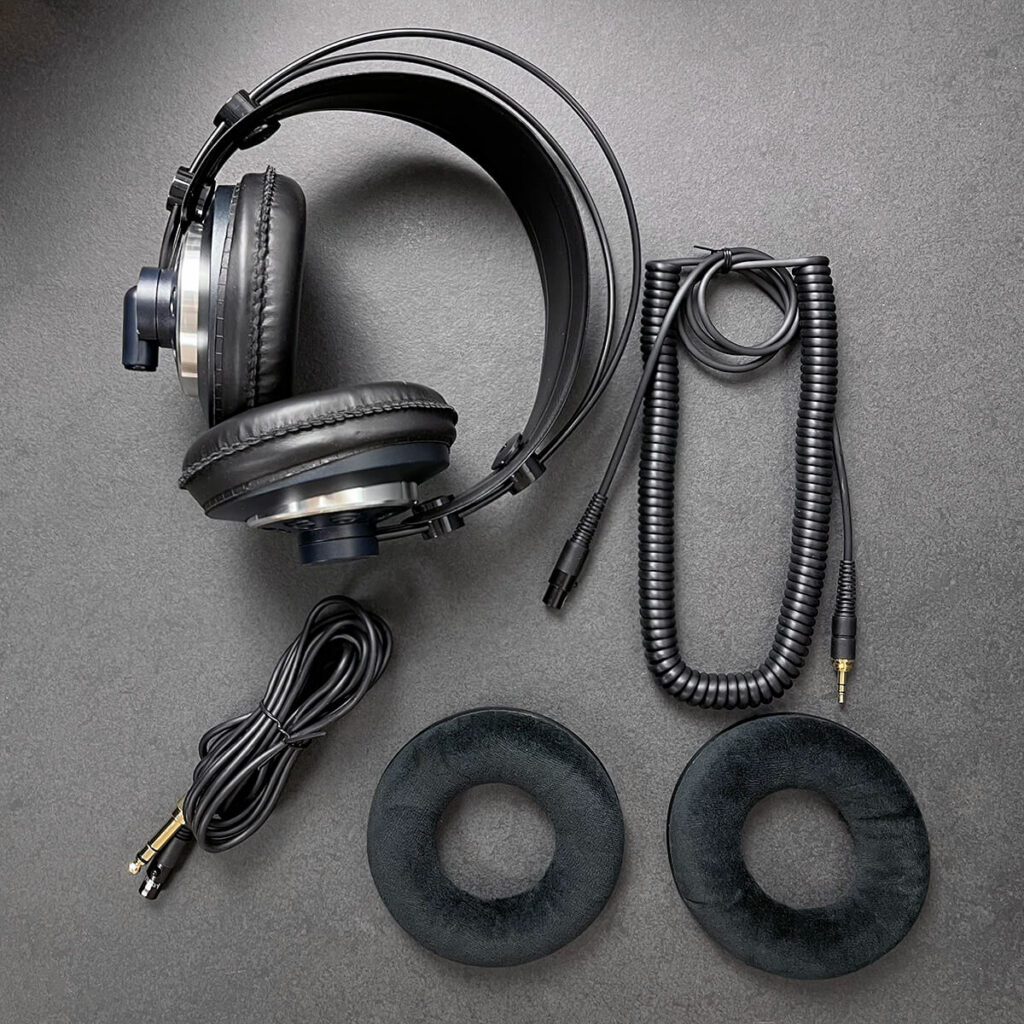I recently got myself a Groovebox from Novation (Novation Circuit Tracks) to make some electronic music. I am absolutely not a musician, but the possibilities of the device are fascinating and so it happened that I got the new version of the Novation Circuit (the "new" has the addition "Tracks"). Certainly there will be a layman's test report soon, but this post here is about headphones that I got for it: the AKG K240 MK II.
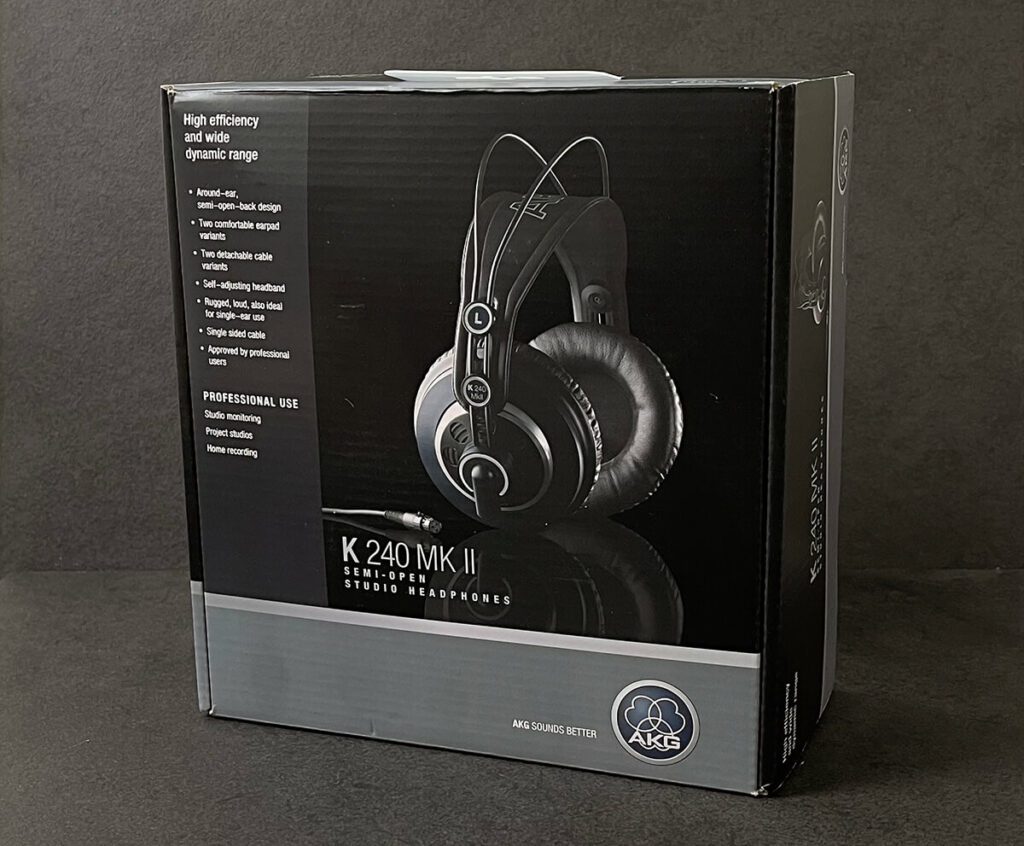
Chapter in this post:
- 1 Why wired headphones and not the AirPods?
- 2 studio headphones vs. "normal" headphones
- 3 Technical data of the AKG K-240 MKII
- 4 Processing of the AKG K240 MKII
- 5 interchangeable cables and ear pads
- 6 AKG K240 MKII in the test: the sound quality
- 7 Not all good reviews about the AKG K240 MKII
- 8 Clear, balanced, slight weaknesses at very low frequencies
- 9 Low bit rate music doesn't sound good
- 10 Conclusion: price and performance of the AKG K240 MKII
- 11 AKG K240 MKII on iPhone, iPad and Mac - possible with an adapter
- 12 Similar posts
Why wired headphones and not the AirPods?
Very simple: The Novation Groovebox does not support Bluetooth and only offers a 3,5 mm jack socket to connect headphones or an amplifier. I suspect that Bluetooth is not so popular with music makers because it is always associated with a certain latency, which interferes with production.
So that I don't annoy other roommates with my unmusical chatter, I wanted to forego speakers and instead get headphones. And the AirPods are unfortunately out of the question because they only work via Bluetooth. The EarPods would have been a choice, but they have a very average sound.
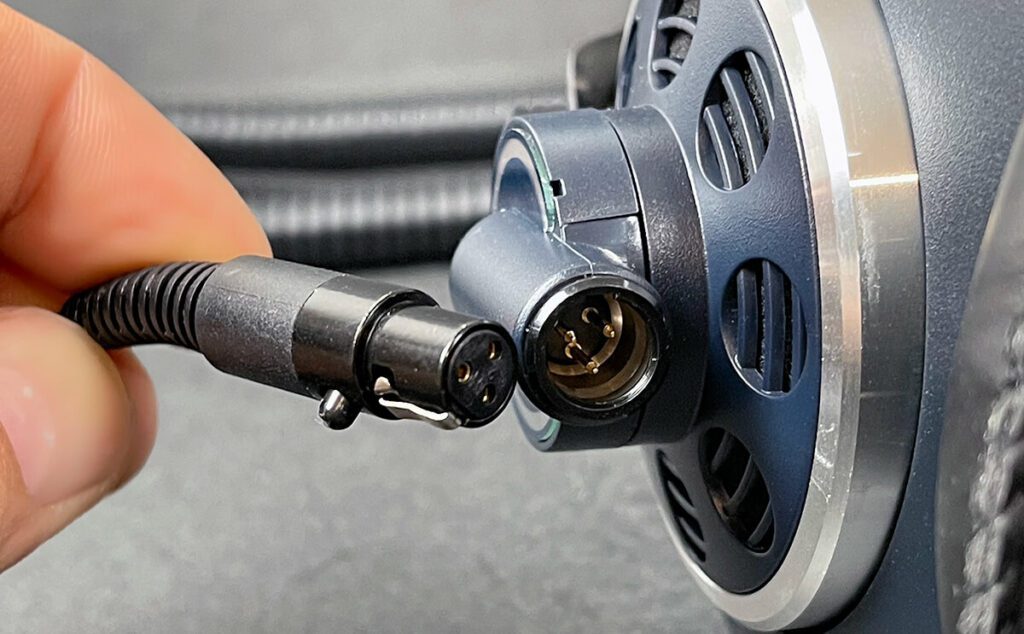
Studio headphones vs. "normal" headphones
The second criterion that was important to me when choosing the headphones is the neutral frequency response. If you generally wear headphones when producing music or audio that already have a bass-heavy sound, this frequency range will be underrepresented in the finished audio file because the headphones have artificially increased it.
For this reason, musicians and other audio producers like to use studio headphones that have a frequency response that is as linear as possible and thus a "neutral" sound.
As a result, of course, studio headphones don't sound as "good" as many people equate heavy bass with good sound. But the bass isn't "amplified" here like it is with Bose or Beats is said, but the bass range is at best just as strong and weak as the mids and highs in studio headphones. This gives them a rather neutral sound, which for most people is probably best described as "clear but boring".
For this reason, studio headphones for normal music enjoyment are only suitable for a few people or for music styles such as classical ... Most people will prefer other headphones that "optimize" the sound through their construction or electronics.

Technical data of the AKG K-240 MKII
In my opinion, the specs are less important than the sound of headphones, but I would still like to deal with these data:
- Manufacturer: AKG
- Model: K-240 MKII
- Construction: Circumaural (Over-Ear)
- System: semi-open
- dynamic headphones
- Nominal impedance: 55 Ohm
- Nominal load capacity: 200 mW
- Transmission range: 15 - 25.000 Hz
- Sound pressure level: 91 dB / V
- detachable cable, one-sided cable connection
- 3m straight cable with 3,5 mm jack plug
- 5m spiral cable with 3,5 mm jack plug
- screwable adapter 3,5 mm to 6,3 mm jack
- Weight without cable: 226 g
- Weight with cable: 281 g
- incl. 1 pair of velor ear pads
- Source: Thomann or Amazon
- Price: approx. 60 - 65 euros
From the price you can see that I looked around in the lower segment when shopping. I only need the headphones for my private music-making experiments and I think cheap headphones are enough for that.
Processing of the AKG K240 MKII
The AKG K240 MKII headphones are largely made of plastic, which I expected in view of the price, but also find it good because it makes the weight quite low. The headphones can be worn for a long time without being uncomfortable due to the weight.
There are lighter headphones, but these are mostly of the on-ear design, which I wanted to avoid for reasons of comfort.
Despite the large amount of plastic, the AKG K240 MKII looks very robust and the height adjustment of the ear cups is tight and by no means wobbly.
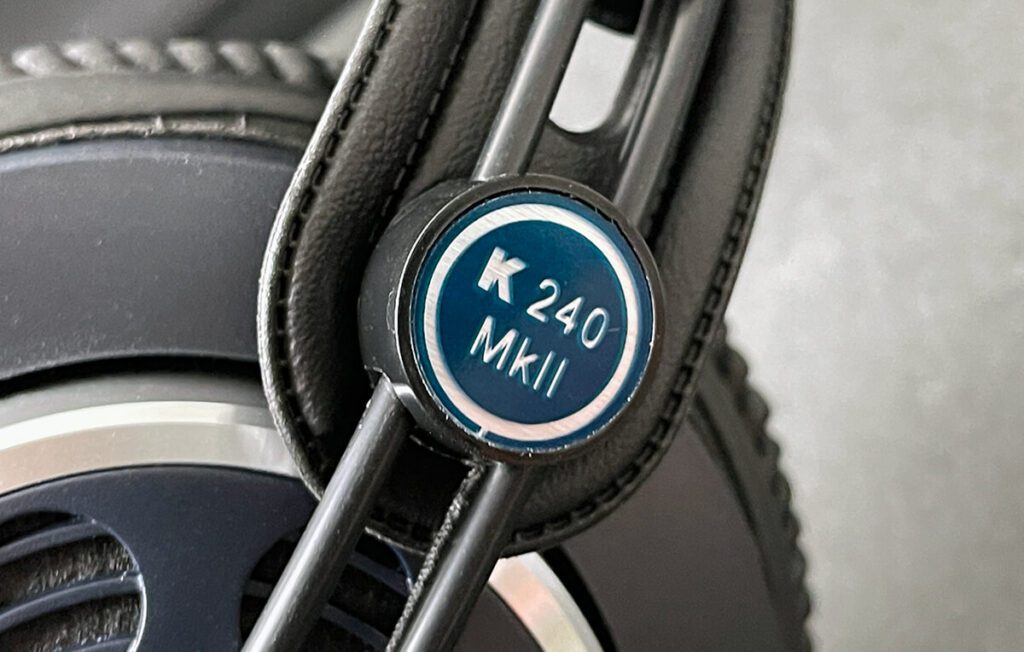
A Thomann customer wrote this nice sentence about processing:
Immediately after unpacking, I had to look at the bill again to make sure that I really bought the right headphones. I've already seen headphones that were much more expensive and made much worse.
So there is nothing negative to report about the processing. The soft band that rests on the head is pleasantly soft and - like the low weight - ensures good wearing comfort.
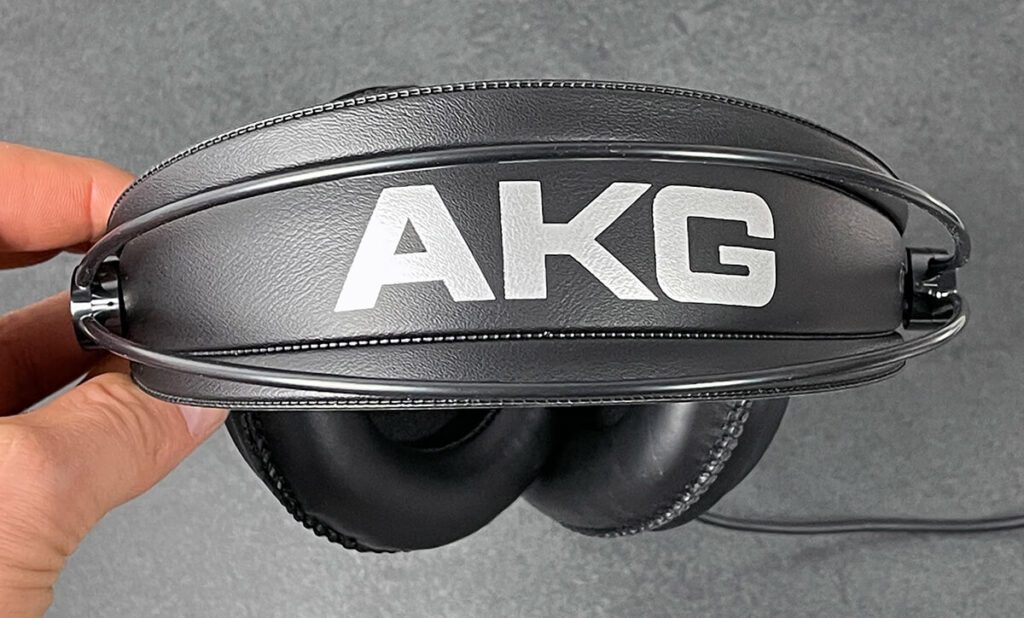
Interchangeable cable and ear pads
I think it is positive that the cable can be exchanged without any problems. It is connected to the headphones with a mini XLR connector, which clicks into place and can only be released by pressing a small metal button. Thanks to the standardized mini XLR connection, you are free to use non-AKG cables and by using a plug connection, defective cables can be quickly replaced without the entire headphones having to be scrapped.
Another advantage is the ability to change the ear pads yourself. The scope of delivery includes those with artificial leather that are already mounted, but you can also find a pair with a velvet cover.

AKG K240 MKII in the test: the sound quality
For me as a non-audiophile, it is always a bit difficult to judge the sound of headphones. It is good if you already have a few customer reviews at Thomann at hand. When it comes to audio equipment, I always value the reviews at Thomann, because I think there are more musicians there than at Amazon.
Not just good reviews of the AKG K240 MKII
When it comes to headphones, you will always find both very positive and very negative reviews. I think that is mainly due to the subjective feeling that every person has when assessing a "good sound" of headphones.
So you can find people who rate the sound of the AKG K240 MKII in the mid-range and tinny, but also those who perceive the sound to be very clear and balanced. Ultimately, you have to see for yourself how you personally perceive the sound.
Despite the negative reviews, I decided on the AKG K240 MKII because it received significantly more good than bad reviews and also because AKG has had a good name in the field of studio equipment for a long time.
- Read more: Syllable D9X - Wireless Bluetooth Headphones as Apple AirPods Alternative?
- Read more: Batteries or rechargeable batteries for the Arlo “Wire Free” wireless camera
- Read more: In the test: RIVA Turbo X - mobile high-end Bluetooth speaker for audiophiles
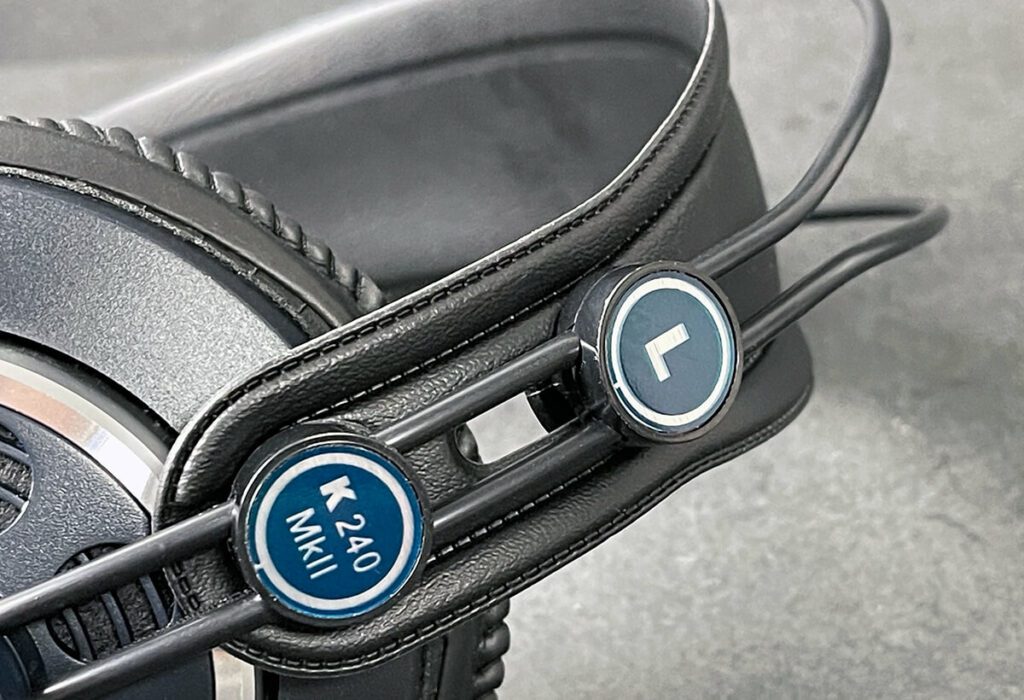
Clear, balanced, slight weaknesses at very low frequencies
In my opinion, the sound is actually neutral and balanced, but I was able to determine with some tracks of electronic music that my Bose QC35 is better able to transmit extremely low frequencies than the AKG K240 MKII. But here I am again comparing “bass-heavy” headphones with studio headphones, which actually doesn't make sense.
This limitation only occurred with so few songs that you can actually live with it.
Finally, a nice rating from a Thomann customer, who is also more than twice as expensive AKG K702 available and so can judge both:
Compared to the K-702, hardly any difference can be heard. The K-702 is perhaps a bit more brilliant and also has a bit more space, but that really doesn't bother me at all. [...] With the headphones I heard details in the songs that I normally only hear when I'm at home alone and sitting in front of my system.
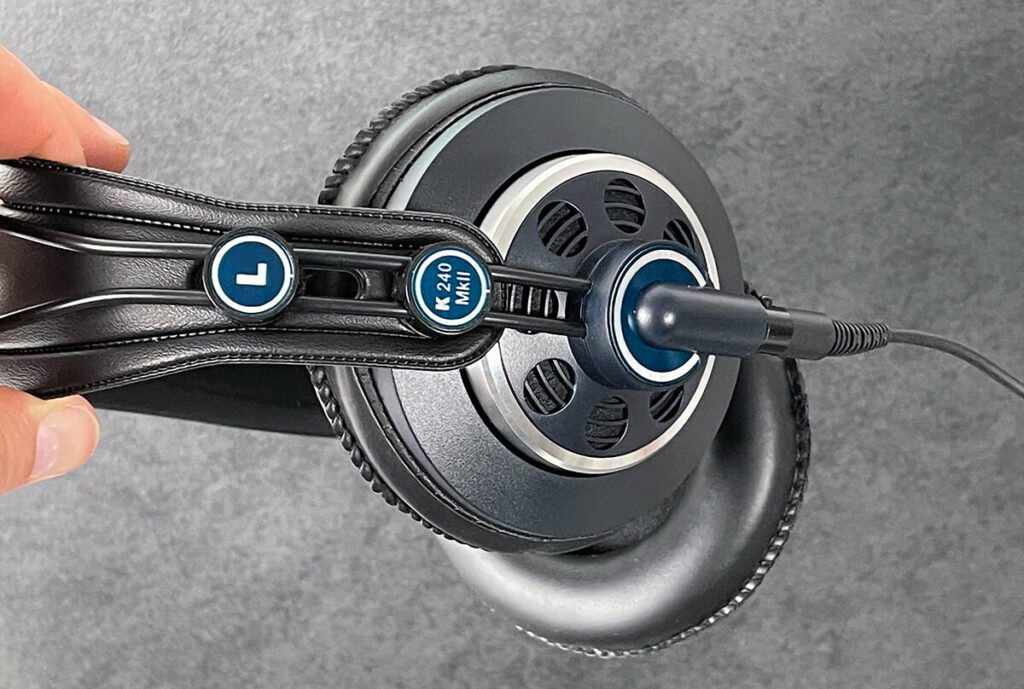
Low bit rate music doesn't sound good
What I also noticed is a "problem" that you have with all studio headphones: If you listen to MP3 with low quality, you can unfortunately hear the poor sound quality much more clearly than with normal headphones. I suppose this is because the medium and high frequency ranges are not regulated here.
In addition, the AKG K240 MKII may also resolve the background noise better than my Bose headphones. The typical crackling of too low a bit rate can be heard more quickly. But I see that as a plus point with studio headphones, because after all you want to find the “weak points” of your audio creations in order to fix them.

Conclusion: price and performance of the AKG K240 MKII
I bought the AKG headphones for 61 euros from Thomann and can only say: it's a bargain. I would not have expected the processing quality and the elegant and simple look at this price.
The interchangeable cable is also a nice goodie. The fact that two cables and two replacement covers for the headphones are included in the scope of delivery is perfect.
If you are looking for cheap, wired headphones without a lot of frills but with good wearing comfort, you should be happy with the AKG K240 MKII.
You can find it here at Thomann or Amazon for a price between 60 and 65 euros.

AKG K240 MKII on iPhone, iPad and Mac - possible with an adapter
So that you can use the headphones on the iPhone, you need the Apple Lightning to 3,5mm jack adapter. And please take the original from Apple. In my experience, all other audio adapters of this type will stop working sooner or later.
If you have a Mac or an iPad Pro with a USB-C interface, you need one USB-C to audio adapter - preferably also the model from Apple, although I believe that other adapters also work well here, since USB-C is not a proprietary Apple thing.
Related Articles
Jens has been running the blog since 2012. He acts as Sir Apfelot for his readers and helps them with technical problems. In his spare time he rides electric unicycles, takes photos (preferably with the iPhone, of course), climbs around in the Hessian mountains or hikes with the family. His articles deal with Apple products, news from the world of drones or solutions to current bugs.

